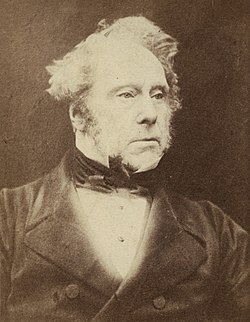
Back যুক্তরাজ্যের সাধারণ নির্বাচন, ১৮৬৫ Bengali/Bangla Etholiad cyffredinol y Deyrnas Unedig, 1865 Welsh Britische Unterhauswahl 1865 German Elecciones generales del Reino Unido de 1865 Spanish Élections générales britanniques de 1865 French הבחירות הכלליות בבריטניה 1865 HE Elezioni generali nel Regno Unito del 1865 Italian 1865년 영국 총선 Korean Парламентские выборы в Великобритании (1865) Russian Парламентські вибори у Великій Британії 1865 Ukrainian
| |||||||||||||||||||||||||||||||||||||
All 658 seats in the House of Commons 330 seats needed for a majority | |||||||||||||||||||||||||||||||||||||
|---|---|---|---|---|---|---|---|---|---|---|---|---|---|---|---|---|---|---|---|---|---|---|---|---|---|---|---|---|---|---|---|---|---|---|---|---|---|
| Turnout | 854,856 | ||||||||||||||||||||||||||||||||||||
| |||||||||||||||||||||||||||||||||||||
 Colours denote the winning party—as shown in § Results | |||||||||||||||||||||||||||||||||||||
 Composition of the House of Commons after the election | |||||||||||||||||||||||||||||||||||||
| |||||||||||||||||||||||||||||||||||||
The 1865 United Kingdom general election was held 7 July 1865 to 24 July 1865 to elect 658 members of the House of Commons. It saw the Liberals, led by Lord Palmerston, increase their large majority over the Earl of Derby's Conservatives to 80.
Palmerston died in October the same year and was succeeded by Lord John Russell as Prime Minister.[1] Despite the Liberal majority, the party was divided by the issue of further parliamentary reform, and Russell resigned after being defeated in a vote in the House of Commons in 1866, leading to minority Conservative governments under Derby and then Benjamin Disraeli.
This was the last United Kingdom general election until 2019 where a party increased its majority after having been returned to office at the previous election with a reduced majority.
Cite error: There are <ref group=lower-alpha> tags or {{efn}} templates on this page, but the references will not show without a {{reflist|group=lower-alpha}} template or {{notelist}} template (see the help page).
© MMXXIII Rich X Search. We shall prevail. All rights reserved. Rich X Search

